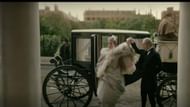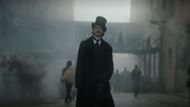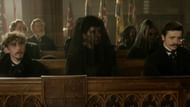House of Guinness has garnered a significant following on Netflix and is climbing the top 10 charts across the United States. Steven Knight, the creator of Peaky Blinders, created this show. The new period drama shifts from the old streets of Birmingham to the grand estates of 19th-century Dublin.
The show explores the Guinness dynasty, a family name whose brand has become synonymous with one of the world's most popular beverages.
House of Guinness opens with the death of Sir Benjamin Guinness, the man who transformed a small brewery into an empire. His passing sends shockwaves through his four adult children and the massive network of people connected to the family business.
The series blends family drama with historical events, painting a picture of ambition, wealth, and the complex relationships that come with both. Behind the fictional narrative lies a real story of scandal, innovation and legacy that transformed Ireland and beyond.
7 real-life facts to know about the inspiration behind Netflix's House of Guinness
1) The 9,000-Year Lease that started it all

The House of Guinness begins with the death of Sir Benjamin, but the family's story actually starts years earlier. In 1759, Arthur Guinness signed one of history's most ambitious lease agreements. He secured a 9,000-year lease for a rundown brewery at St. James Gate in Dublin.
The yearly rent was just £45. The property included basic brewing equipment, four acres, and storage for 200 tons of hay. This bold step laid the foundation for what would become a global brand. Today, the brewery has expanded to 50 acres. The company eventually purchased the land outright, making the actual lease more of a historical curiosity than a binding contract. Visitors can tour the Guinness Storehouse to learn about the brewing process and the family's journey.
2) A will that protected the brewery like a fifth child

When Sir Benjamin Guinness died in 1868, he left specific instructions in his will. The brewery went to his kids, Edward and Arthur, with clear terms that they must run it together. If one brother went bankrupt or wanted to exit, his share would pass to the other. This arrangement demonstrated Benjamin's priority of protecting the business above all else.
His will was the largest ever recorded in Ireland at that time, with his estate valued at approximately £1.1 million. Arthur received the family home at St. Anne's. Benjamin Lee, also called Lee, inherited estates in Limerick, Kerry, and Kilkenny. Edward acquired the house at 80 St. Stephen Green, along with additional properties. Their sister Anne received £30,000 for investments but no property. The unequal distribution reflected Benjamin's vision for keeping the brewery safe and thriving under male heirs.
3) Arthur's marriage and hidden identity

The House of Guinness portrays Arthur Guinness as a man struggling with his identity in a restrictive era. In 1871, Arthur married Lady Olivia Charlotte Hedges-White, daughter of the 3rd Earl of Bantry.
The two never had kids. Historical records suggest their marriage was arranged as a marriage blanche, meaning it would stay unconsummated. This arrangement points to the possibility that Arthur was gay, a reality her would have needed to hide in Victorian society.
Lady Olivia came from an aristocratic background that owned Bantry House in County Cork. Their union served economic and social purposes rather than romantic ones. The series tackles this aspect of Arthur's life with sensitivity, displaying the pressures faced by someone unable to live authentically.
4) The election scandal that rocked Dublin

In 1868, Arthur won election as a Conservative Member of Parliament for Dublin. His victory was short-lived. Accusations emerged that Arthur's supporters had bribed freemen to vote for him.
Freemen were Protestants who inherited the right to vote. Evidence suggested that eleven named Freemans received bribes, with potentially twenty to thirty more involved. Over 200 freemen allegedly agreed to support Arthur in exchange for money.
The judge ultimately determined that the scheme had occurred without Arthur's knowledge. He was cleared of personal wrongdoing but prohibited from running again during that parliamentary term.
House of Guinness displays this scandal and its impact on Arthur's reputation. He returned to politics successfully in the 1874 election, later becoming Baron Ardilaun.
Also See: Will there be House of Guinness season 2? Renewal possibilities and more
5) Edward's business genius transformed the company

When Arthur left the brewery in 1876 to focus on politics, Edward bought his brother's share for £600,000. At just 29 years old, Edward is the only owner. His leadership revolutionized the company. By 1879, the brewery was producing 565,000 hogsheads of stout annually.
Every hogshead holds 54 gallons. Seven years later, production reached 907,000 hogshead. Edward made a controversial decision to take Guinness public on the London Stock Exchange in 1886. He sold a 65% stake for £6 million, valuing the company at £9.23 million.
This move turned him into Ireland's richest person. Edward also chose not to invest in pubs, which would have limited distribution. Instead, he focused on global expansion and quality control. Today, approximately 10 million glasses of Guinness are consumed daily worldwide.
Also See: The Guinness family tree in House of Guinness season 1, explained
6) The harp symbol that became too famous

In 1862, Guinness started using a harp on its label to identify itself as Irish. The design was based on the Brian Boru Harp, a cultural symbol displayed at Trinity College in Dublin.
The company trademarked the harp in 1876. When the Irish Free State was formed in 1922, it wanted to use the same symbol, but it discovered that Guinness owned the trademark.
The solution was easy: flip the harp. The Irish government used a mirror image while Guinness kept its former version. The quirk of history means Ireland's national symbol technically faces the opposite direction from the brewery's logo. The Guinness Harp has undergone seven redesigns since 1862.
7) Anne's legacy of compassion

The House of Guinness portrays Anne Guinness as a woman devoted to charitable work, despite suffering from a chronic illness. She married Reverend William Plunket in 1862, who later became the Archbishop of Dublin. Anne's dowry of £49,000 funded expansions to their home at Old Connaught House.
She continued her father's work by restoring St. Patrick's Cathedral. In 1876, she established St. Patrick's Nursing Home, which trained nurses affiliated with the Church of Ireland.
Anne lived with a mysterious degenerative illness throughout her life, dying at age 50. A memorial in St. Stephen's Chapel at St. Patrick's Cathedral honors her with the inscription, I was thirsty and ye gave me drink.
Also See: House Of Guinness: 7 Biggest Changes From The Real-Life Story
The House of Guinness brings history to life through its complex characters and dramatic events. The real Guinness family built an empire that continues to thrive to this day. Their story involves secrets, ambition, and lasting contributions to Ireland and the world.
